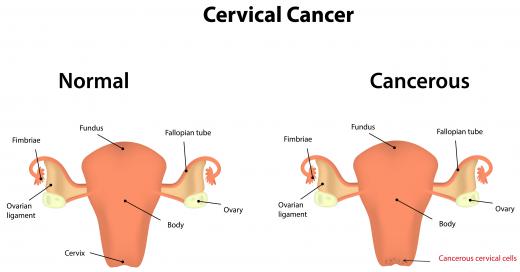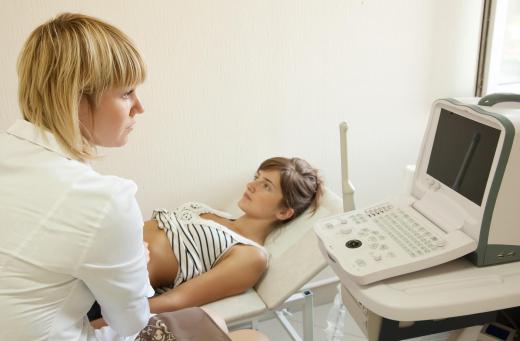What are Oncogenes?
 Mary McMahon
Mary McMahon
An oncogene is a gene which has the capability to cause a cell to turn malignant. There are a number of ways in which an oncogene can enter the body, and these genes can also act in a variety of ways. Many oncogenes are cell division genes which have gone awry, but other types of genetic information can contribute to the development of malignancies, such as genes which regulate cell death. Oncogenes must be activated in order for a malignancy to develop, which means that people can carry them without having cancer. People who carry oncogenes are at increased risk of developing cancer, and may be encouraged to take steps to control their risk.
Some oncogenes are inherited, as demonstrated in studies on cancers such as breast cancer. In this case, a mutation occurred at some point along a family line, and the bad gene has been passed along. When the circumstances are right, the inherited gene can be activated, causing a cancer to develop. Others are a result of mutations during fetal development, or of mutations which arise during cell division. The more cells divide, the greater the risk of mutations; skin cancers, for example, have been linked with sun damaged skin which attempts to repair itself and sometimes turns malignant.

It is also possible for certain viruses to introduce harmful genetic material to the body through a process called viral transfection. Viruses are already designed to introduce new genetic material to further their own agenda, and sometimes this material can be harmful. Cervical cancer, for example, is closely linked with infection with the human papilloma virus, a virus which carries several known oncogenes.

People also have what are known as proto-oncogenes. These are normal genes which have the potential to turn into oncogenes if they mutate. Proto-oncogenes are at risk of mutation through cell damage, viral transfection, and random happenstance. They can also become dangerous if they start overexpressing; when it comes to the body, there is such a thing as too much of a good thing.
Identification of oncogenes is an important part of cancer research, as is determining how such genes behave in the body, and studying the circumstances in which oncogenes can form and what causes them to become active. Theoretically, it may be possible to treat some cancers with gene therapy which switches these hazardous genes off and keeps them off, so that they cannot start expressing and cause a malignancy to develop.
AS FEATURED ON:
AS FEATURED ON:












Discuss this Article
Post your comments